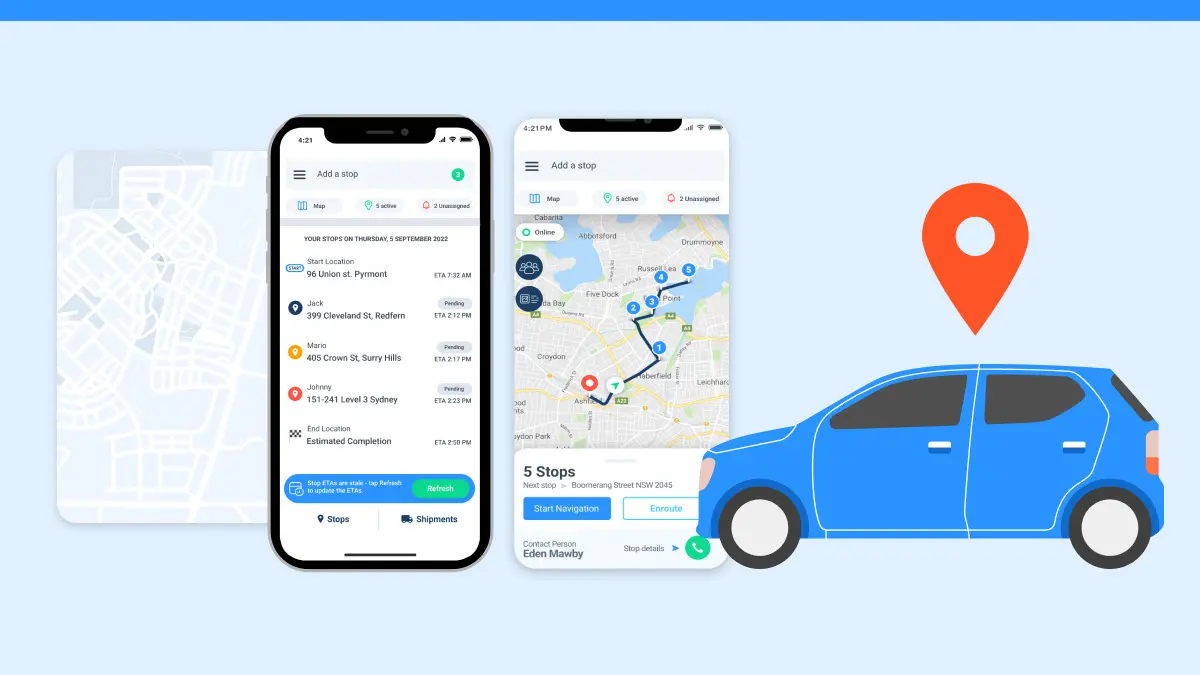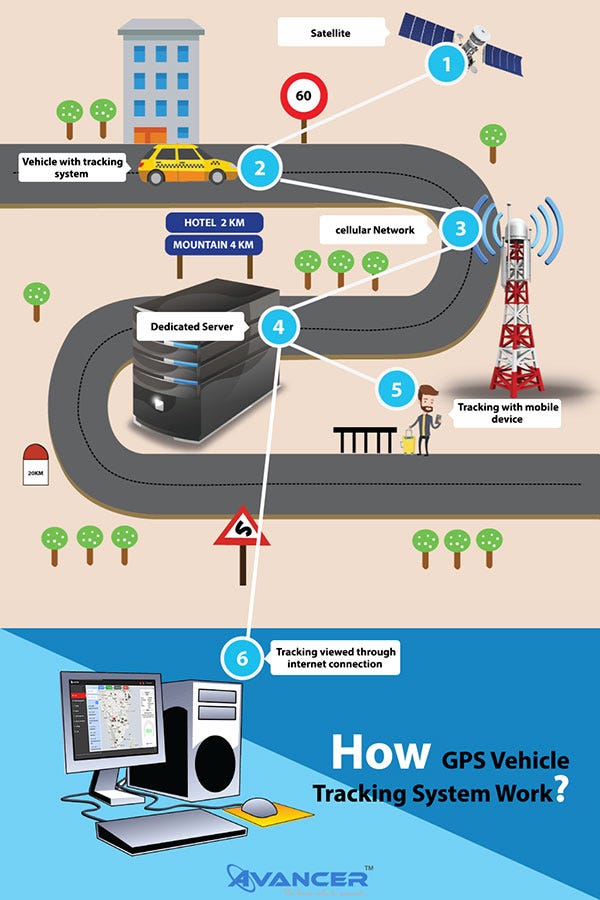Comprehensive Overview to GPS Tracking: Improve Protection and Performance
Comprehensive Overview to GPS Tracking: Improve Protection and Performance
Blog Article
Optimizing Performance With GPS Tracking: Methods for Fleet Administration and Property Tracking
In the realm of fleet management and asset monitoring, the utilization of GPS radar has become a keystone for enhancing functional performance and performance. By using the power of real-time data, services can simplify their logistics, enhance courses, and boost general fleet performance. However, real potential lies not just in the implementation of these innovations but additionally in the critical application of the understandings they offer. From boosting driver safety and security to making educated choices based upon thorough information analytics, the possibilities are substantial. As we explore the various strategies and techniques to make the most of performance with general practitioner tracking, a globe of possibilities opens to redefine how organizations handle their fleets and check their assets.
Implementing Real-Time Monitoring Solutions
To make best use of operational performance, business can execute real-time monitoring systems that offer prompt location data for their assets. By using GPS technology, services can gain real-time insights into the whereabouts of their vehicles, devices, and various other useful sources. This degree of exposure permits business to enhance procedures, improve performance, and boost total efficiency.
Real-time radar provide various benefits for companies across various sectors. With the ability to keep track of assets continually, companies can maximize transmitting, schedule maintenance better, and reduce the risk of theft or loss. Additionally, these systems make it possible for organizations to react immediately to any kind of unanticipated occasions or disturbances, guaranteeing minimal downtime and maximum efficiency.
Implementing real-time radar needs careful preparation and factor to consider of certain business needs. Firms need to pick the appropriate technology copyright, tailor the system to satisfy their requirements, and supply adequate training to staff members. By buying real-time monitoring remedies, services can remain in advance of the competitors, provide superior customer solution, and achieve lasting development in today's busy market setting.
Maximizing Path Preparation and Organizing

One trick technique for optimizing course preparation is to make use of historic data and real-time info to determine the most reliable paths for lorries. By evaluating past routes and thinking about factors such as web traffic patterns and delivery home windows, businesses can develop routines that reduce unnecessary stops and delays. Additionally, executing dynamic directing capabilities enables adjustments to be made in real-time based on changing conditions, making sure that motorists constantly take one of the most efficient path to their location.
Enhancing Driver Efficiency and Safety
Enhancing motorist performance and safety is extremely important in making sure the protected and smooth operation of a fleet. By utilizing GPS tracking innovation, fleet managers can check motorist actions in real-time and supply prompt comments to advertise secure driving methods. This consists of monitoring rate limitations, harsh braking, acceleration patterns, and adherence to website traffic laws.
Moreover, GPS tracking systems can help in identifying chauffeurs who may need added training or assistance to boost their efficiency (gps tracking). By examining data on driving practices and patterns, fleet managers can apply targeted training programs to attend to certain areas of enhancement. This positive approach not just boosts total motorist performance however likewise adds to a much safer work atmosphere for everybody included
Along with performance tracking, general practitioner radar can likewise enhance driver safety and security by giving emergency situation support features. In case of a crash or failure, motorists can swiftly send distress signals, permitting fleet managers to respond quickly and dispatch aid when needed. Generally, integrating GPS tracking modern technology right into fleet administration methods is crucial for maximizing driver performance and making certain the security of both possessions and vehicle drivers.

Making Use Of Geofencing for Boosted Protection
Making best use of fleet safety exceeds keeping an eye on chauffeur performance and security; one reliable technique is through the strategic use geofencing technology. Geofencing permits fleet managers to develop digital boundaries or geozones around particular areas, enabling them to obtain real-time informs when more info here vehicles go into or leave these assigned locations. By setting up geofences around high-risk places such as building sites, unauthorized locations, or perhaps customer areas, fleet supervisors can enhance security measures and mitigate potential risks.
Geofencing not just boosts security but likewise enables quick feedback times in case of why not find out more unapproved car use or theft. In case of a breach, alerts can be sent out to fleet managers, allowing them to take prompt activity to locate and recuperate the automobile. Additionally, geofencing can aid in checking car activity throughout off-hours, making certain that vehicles are not being used for unauthorized objectives.
Integrating GPS Data for Strategic Decision-Making
Using GPS information assimilation is vital for informed tactical decision-making in fleet management procedures. By incorporating GPS data into fleet management systems, services can get useful understandings into their operations, leading to a lot more reliable routes, boosted driver actions, and far better total efficiency. With the integration of GPS data, fleet supervisors can track vehicle areas in real-time, screen gas usage, and examine driver performance metrics such as speed, idling time, and extreme stopping.
In addition, integrating GPS data permits for the optimization of routes based upon web traffic conditions, weather condition patterns, and various other outside factors, aiding to minimize delivery times and operational prices. By analyzing historical GPS data, fleet supervisors can recognize patterns, patterns, and locations for renovation, enabling them to make data-driven choices that enhance performance and enhance operations.
Conclusion
In verdict, the execution of GPS radar can greatly improve performance in fleet monitoring and property monitoring. By using real-time monitoring, enhancing course preparation, improving chauffeur performance, making use of geofencing for protection, and integrating GPS data for critical decision-making, organizations can improve operations and attain expense savings (gps tracking). These methods allow companies to simplify processes, boost performance, and inevitably make the most of the overall performance of their procedures
In the realm of fleet monitoring and asset tracking, the application of GPS tracking systems has come to be a cornerstone for enhancing functional effectiveness and efficiency. As we explore the different strategies and techniques to make the most of efficiency with GPS monitoring, a globe of opportunities opens up to redefine exactly how organizations manage their fleets and monitor their possessions.
By making use of General practitioner monitoring technology, fleet managers can monitor vehicle driver actions in real-time and give immediate feedback to advertise safe driving techniques. Through the combination of GPS information, fleet supervisors can track car places in real-time, display gas click resources intake, and assess chauffeur performance metrics such as rate, idling time, and extreme braking.
In final thought, the implementation of General practitioner monitoring systems can substantially improve efficiency in fleet management and property surveillance.
Report this page